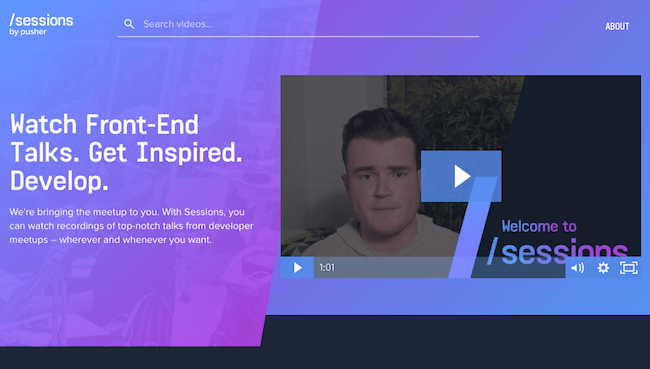Web Development Reading List #162: Server Side React, Inclusive Design And The Web Worldwide
We shouldn’t let ourselves get distracted by people who work on different projects than we do. If a developer advocate works on a web-based QR code application, for example, their way of tackling things most certainly won’t fit your project. If someone builds a real-time dashboard, their concept won’t relate to the company portfolio website you’re building. Bear in mind that *you* need to find the best concept, the best technologies, the best solution for your specific project.
Thinking about the right decisions rather than following cool, new trends blindly, is the first step to building responsible web solutions. That’s what we call progressive enhancement. The only subjective matter in this undertaking is you, judging what level of progressive enhancement a solution should have.
News
- Angular 1.x users, here’s version 1.6 for you. Todd Motto shares what’s new in the version and how to migrate easily.
- The new Microsoft Edge build features support for Brotli, for CSS Custom Properties, as well as async/await. DOM performance has also been improved.
General
- Aaron Gustafson wrote a thoughtful piece on why progressive enhancement is not an anti-JavaScript concept but a concept of finding the best way to adapt to the nature of the web. It’s a subtle, inclusive concept that takes the environment and its quirks into account.
- Pusher created a space for videos of front-end talks. There are some great ones available that you can watch for free.

Concept & Design
- Microsoft’s Inclusive Design guidelines and resources are very helpful to understand how you as a company can take advantage of creating an inclusive product by design.
Web Performance
- Tim Kadlec describes what a new project called “The Web, Worldwide” is about and why it’s important for developers and project owners to understand the role of the Internet in various markets. I wrote a similar post this week about choosing browser support in a project and why we’re often doing it wrong because we base our assumptions on misleading data.
HTML & SVG
- These fun statistics on HTML and SVG usage are really insightful. By analyzing eight million websites, some interesting facts could be discovered:
href="javascript:void(0)", for example, is still used massively, andspan.buttoncan also be found in a lot of codebases.
JavaScript
- Unfortunately, there’s no further source to back up this statement, but Domenic Denicola found out that the Filesystem API might be removed from the specification as it turned out that it’s used for incognito mode detection in browsers in 95% of the use cases.
- The parallax effect isn’t going away anytime soon, so if we need to make use of it, we should at least do it in the most effective, most performant way. Paul Lewis shares how to achieve that.
- Remy Sharp reports how he got started with React.js and how he finally made Server Side React work in his project.

Work & Life
- Holger Bartel wrote about the value of attending conferences and how different things are in Asia, for example, when compared to other parts of the world.
And with that, I’ll close for this week. If you like what I write each week, please support me with a donation or share this resource with other people. You can learn more about the costs of the project here. It’s available via email, RSS and online.
— Anselm
Further Reading
- A Beginner’s Guide To Progressive Web Apps
- Never Stop Learning With Conference Live Streams And Videos
- Meet “Inclusive Front-End Design Patterns”, A New Smashing Book
- World Wide Web, Not Wealthy Western Web (Part 1)



 Register!
Register! Flexible CMS. Headless & API 1st
Flexible CMS. Headless & API 1st




